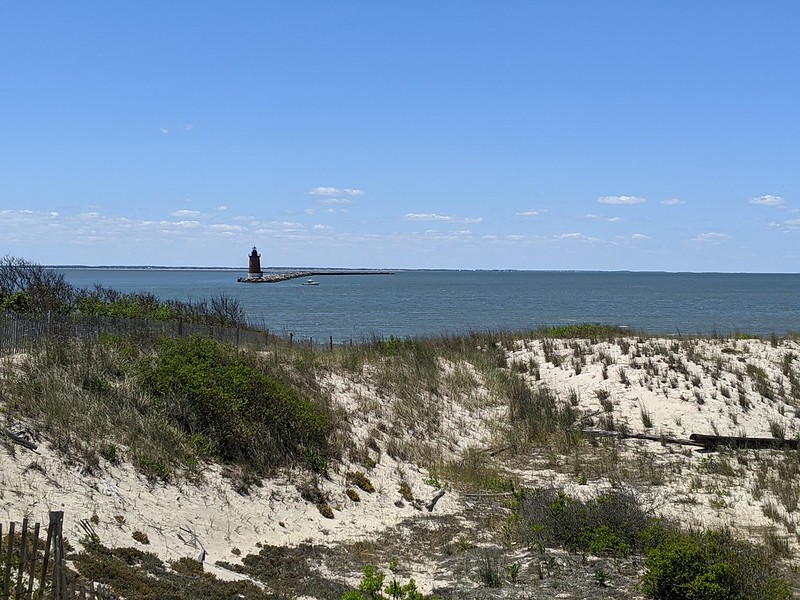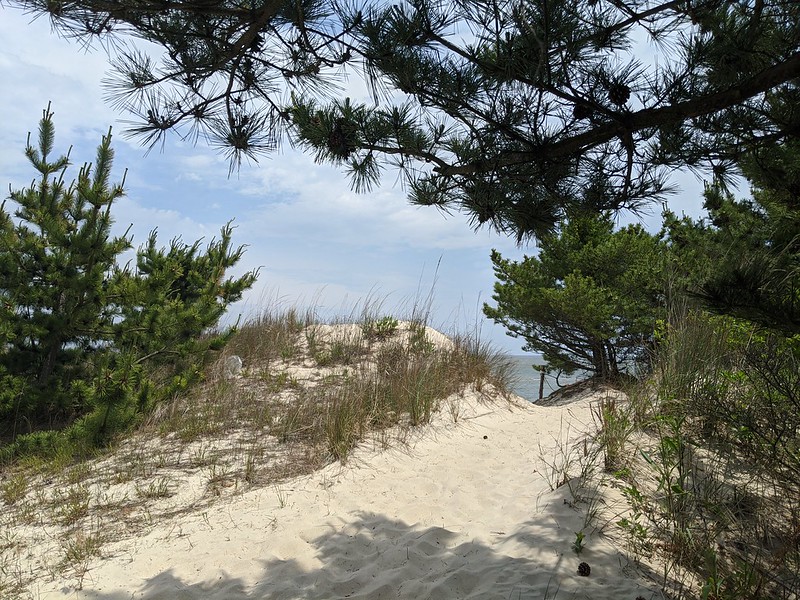The sandy beaches along the Atlantic Ocean and Delaware Bay shorelines are valuable natural resources to the State of Delaware. The beaches were created by nature and continue to be shaped by wind and waves. The 1972 Beach Preservation Act (7 Del.C. Chapter 68) provides the authority to DNREC to enhance, preserve, and protect the beaches in the state so they can be shared and enjoyed by all.
Beaches are made up of different parts, including the berm – the flat part good for recreation, and the dune – the tall ridge of sand covered with grass and other vegetation. Sand dunes are our first line of defense against coastal storms and beach erosion — they form a natural barrier to the destructive forces of wind and waves.
Sand dunes absorb the impact of storm surge and high waves, preventing or delaying flooding of inland areas and damage to inland structures. They are also sand storage areas that supply sand to eroded beaches during storms and barriers to windblown sand and salt spray.

The Shoreline and Waterway Management Section has been working for many years through the Construction Regulation Program and Shoreline Management Program to maintain healthy beaches and dunes through a variety of projects.
Dunes are especially sensitive resources. To succeed, dune protection efforts should not only be the responsibility of DNREC. More valuable are the efforts of those individuals who live on and use the shoreline. Driving and walking on the dunes in areas not designated for such use causes damage to beach grass and other vegetation that helps to trap and hold the sand in place.
Although beach grass is a hardy plant — amazingly tolerant to high salinity conditions, direct sun, extreme heat, lack of fertile soil and a fluctuating water supply — it can not survive being trampled by vehicles, humans, or their pets. As part of its resistance to salinity and drying conditions the plant forms thick brittle stalks which break easily. The passage of only one vehicle or a few people over the dune at the same point will kill a strip of grass. Without vegetation, the dune sand is exposed to wind erosion resulting in weak spots in the dunes.
These weak spots in the dune increase the chance of breaching during a coastal storm, providing channels for floodwaters to move inland. Protecting dunes helps preserve public safety during coastal storms and protects the beach’s sand supply that slows shoreline erosion.
Sand on the beach is subjected to high winds and is blown in every direction throughout the year. Where vegetation can get a foothold in the dry, unfertile sand, the windblown sand grains get batted down to the base of the plant and the sand surface incrementally rises, one grain at a time.
The vegetation and wind blown sand starts to build dunes along flat beach which continue to build as vegetation traps additional sand. Beach grass has adapted to being buried by the sand and it continues to grow with the dune as it gets buried.
While natural dunes still exist in some state park areas, such as Cape Henlopen State Park in Sussex County, most dunes along the Atlantic Ocean coast in Delaware have been constructed or augmented.
Rather than planting vegetation on a flat beach and waiting years for a dune to grow, heavy equipment can be used to build a dune to a specific size and shape based on engineering designs that consider coastal storm waves and water levels.
Constructed dunes are planted with vegetation to mimic the way natural dunes behave where the vegetation traps windblown sand and stabilizes the dune.

To maintain dune stability and promote new dune growth and to help protect inland properties from flood waters, pedestrians and vehicles are prohibited from crossing the dunes in all but designated areas.
Beach grass has thick brittle stalks that can be easily broken and killed by pedestrian or vehicular traffic. This is why you’ll see “Keep Off the Dunes” signs throughout the State’s beaches.
Learn how you can help protect beaches and dunes.
Section 3.03 of the Regulations Governing Beach Protection and the Use of Beaches (7 DE Admin. Code 5102) prohibits the operation of any motorized vehicle or machine and pedestrian traffic on, over or across the primary dune on any State-owned beach except at those locations specified by the Department for such use.
The regulations also prohibit the damaging, destruction or removal of any trees, shrubbery, beach grass or other vegetation growing on any State-owned or maintained beach seaward of the building line.
Related Topics: beaches, natural resources, ocean and coasts, watershed, waterways